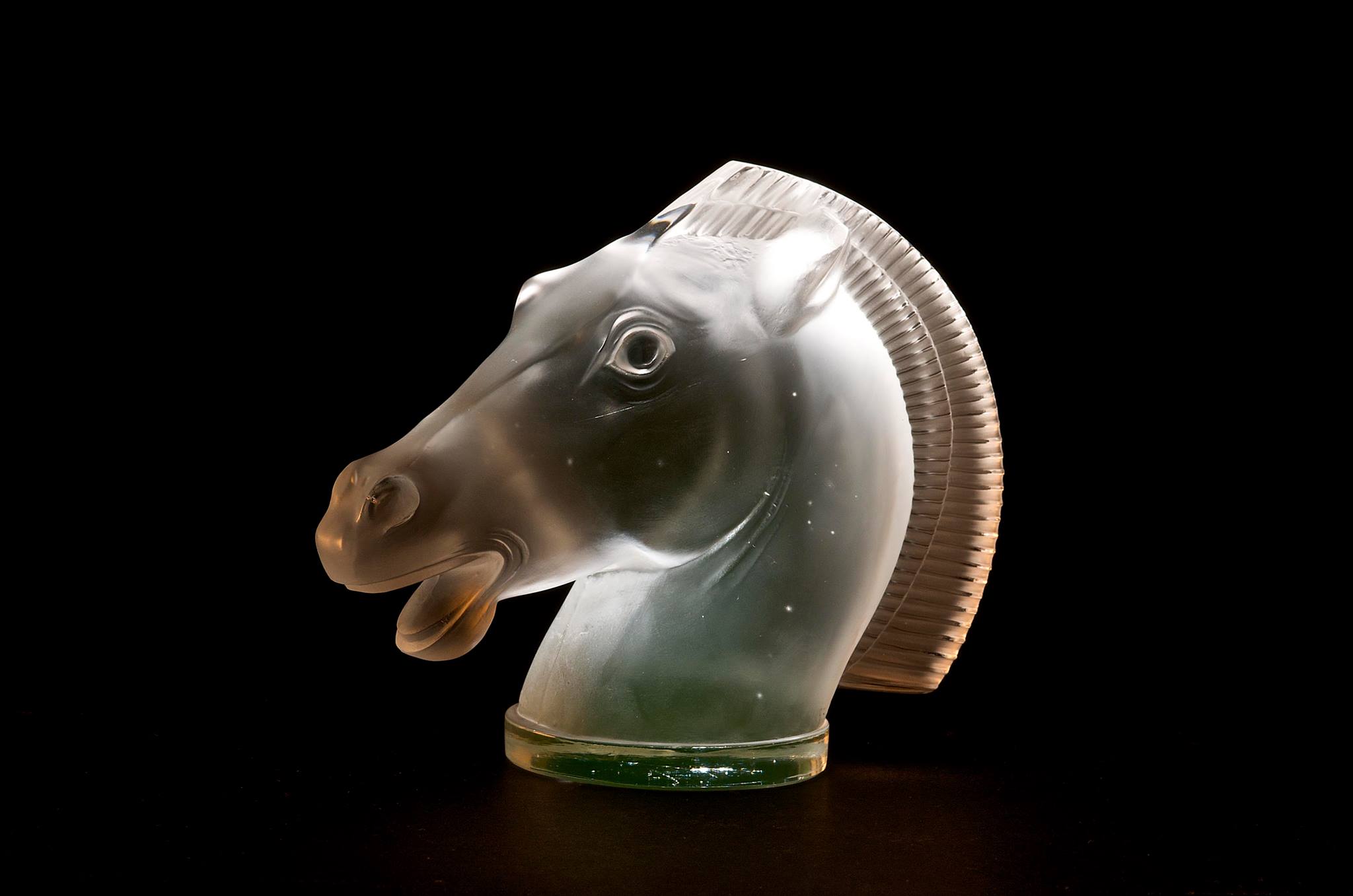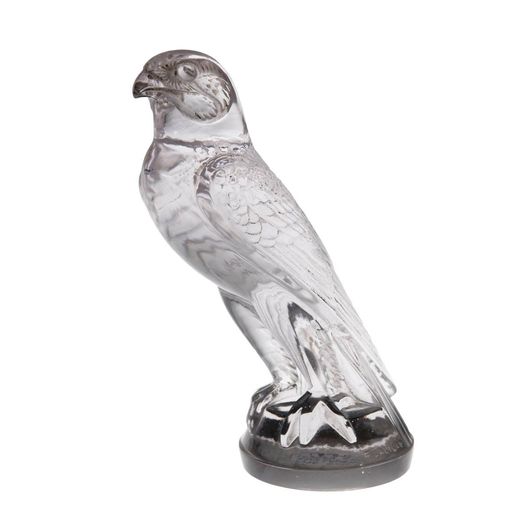Lalique Mascots History
René Lalique creates two more car mascots
Later in August 1925 René Lalique presented two more models specifically for the purpose of mounting as a car mascot (in that they would not physically stand on their own outside of a mounting base without falling over). These were model number 1123 "Comete" and 1122 "Cinq Chevaux" - the Cinq Chevaux was referenced to the Citroën 5CV (5HP in France) designed and marketed between 1922 and 1926. The 5 Chevaux mascot continued for sale for much longer, appearing in the 1932 Lalique et Cie Catalogue but removed by 1937. Coincidentally in 1925, Citroën advertised their automobiles on the Eiffel Tower using 200,000 light bulbs and including designs of falling stars, said to the the inspiration for Lalique's Comete design. It would be almost exactly one year before Lalique created another car mascot, the Archer, under model number 1126. No mascots were created by Lalique in 1927.
The golden year of R. Lalique car mascot design
In 1928 Lalique was at the peak of his creative and design powers as it related to these luxury car accessories at what might also be considered the peak of the golden age of motoring. Some 13 models were launched early in this year "Tete d'epervier" "Tete de Belier" "Tete de Coq" "Tete de Paon" "Coq Nain" "Hirondelle" "Saint-Christophe" "Levrier" "Tete d'aigle" "Petite Libellule" "Victoire" "Grenouille" "Grande Libellule". The creation date did not always reflect the catalogue numbering of the models but all were created between January 1928 and May 1928. This year corresponded also to the earliest of the Breves catalogues in leaflet form which included all 17 models produced to this date with the exception of the Tete de Belier (for reasons unknown). Intriguingly, a later version of the Breve 1928 model leaflet included a plaster maquette of the Vitesse titled "Lalique's latest Femme Nue" with no pricing details, though Vitesse actually appeared late in 1929 after several other models such as "Perche" "Coq Houdan" "Epsom" "Longchamp". Perhaps Breves felt the Vitesse more commercial especially since Epsom and the Longchamp models never appeared in their leaflets (perhaps due to the difficulty in mounting them in their patented bases).
Lalique continues apace with seven more mascot model launches
In 1929 Lalique, in line with demand or perhaps a little behind it, created and launched a further 7 mascot models, namely "Perche" "Coq Houdan" "Epsom" "Longchamp" "Vitesse" "Pintade" "Sanglier". Breves London included "Perche" "Coq Houdan" "Vitesse" "Sanglier" in their sales literature but omitted "Epsom" "Longchamp" and "Pintade" though Epsom did appear in a later sales list entitled "Troy". There were two versions of Longchamp produced under the same 1152 catalogue number, the 1152A version (or double-mane pictured below) quickly superseded by the 1152B version (or single-mane).

The final year of Lalique car mascot design
In 1931, perhaps buoyed by apparently bullish markets after the first economic collapses as part of the initial period of the great depression, Lalique created his final 3 car mascot designs, namely "Renard" "Hibou" "Chrysis". These were expensive pieces and the market optimism turned out to be misplaced and the banking system collapsed. Unsurprisingly, automobile sales were down from their 1928 peak and demand for high-end goods such as accessories for luxury motor cars virtually non-existent. Thus these launches were a commercial failure and few, if any, would have been used for the intended purpose. Any stock would have been marketed by Lalique as a paperweight (presse-papiers). The purchase price and market conditions combined to make certainly the Renard and Hibou models extremely rare to find today. The Chrysis version fared better as it continued in production as a paperweight and statuette long after 1937 and the beginning of the end of the great depression.
Bouchons de Radiateur (Hood Ornaments) category removed from Lalique et Cie Catalogue
From 1932 onwards the fashion for motoring accessories such as hood ornaments was fading and car manufacturers were creating their own identities in terms of radiator design and badging. We have evidence of auto accessories still being marketed in the USA in 1934 but perhaps more as souvenirs or desk items.
In 1937 the car mascots (bouchons de radiateur or hood ornaments) category was definitively removed from the Lalique et Cie Catalogue. At that time, models that remained in stock could be purchased mounted in metal fixing rings on glass opaline bases as bookends (Serre-Livres) in pairs. This included "Faucon" "Coq Nain" "Tete de Belier" "Tete de Coq" "Tete d'Aigle" "Tete de Paon" "Hirondelle" "Longchamps" "Epsom" "Coq Houdan" "Pintade". Some remained available ("sans monture" without bases) as paperweights (Presse-Papiers). This did not include the Falcon or the Epsom as they would not stand up without a base.

